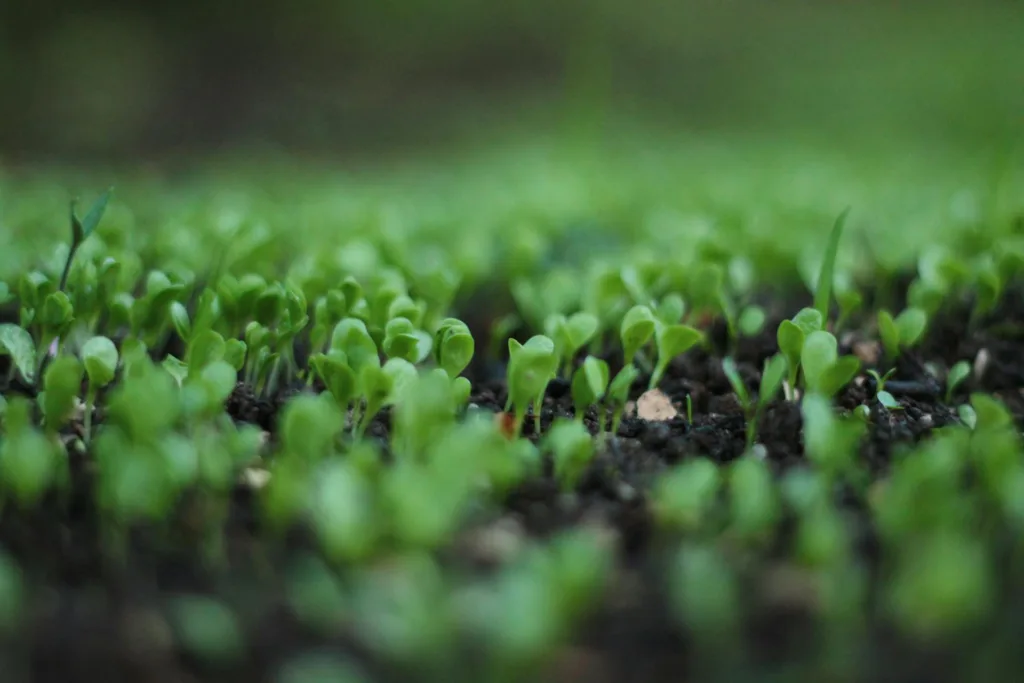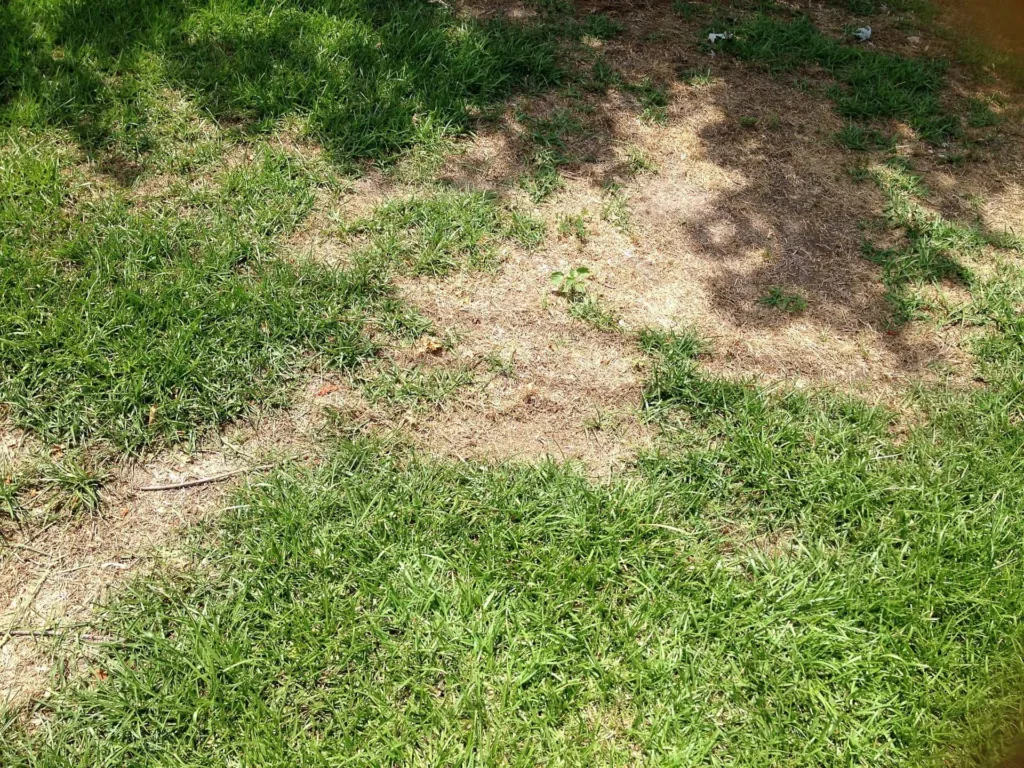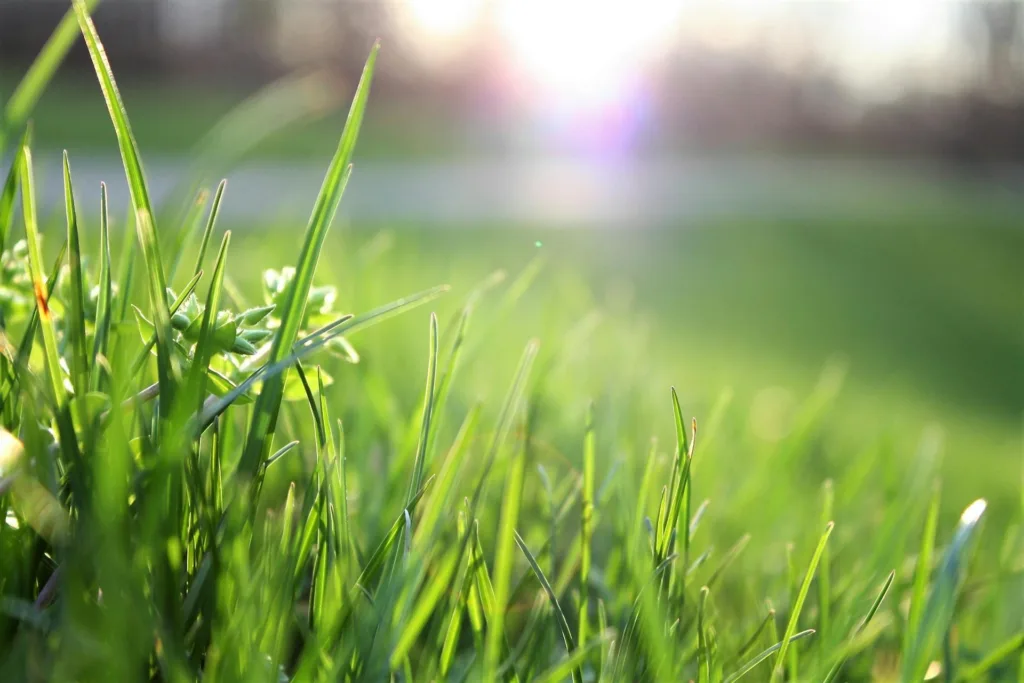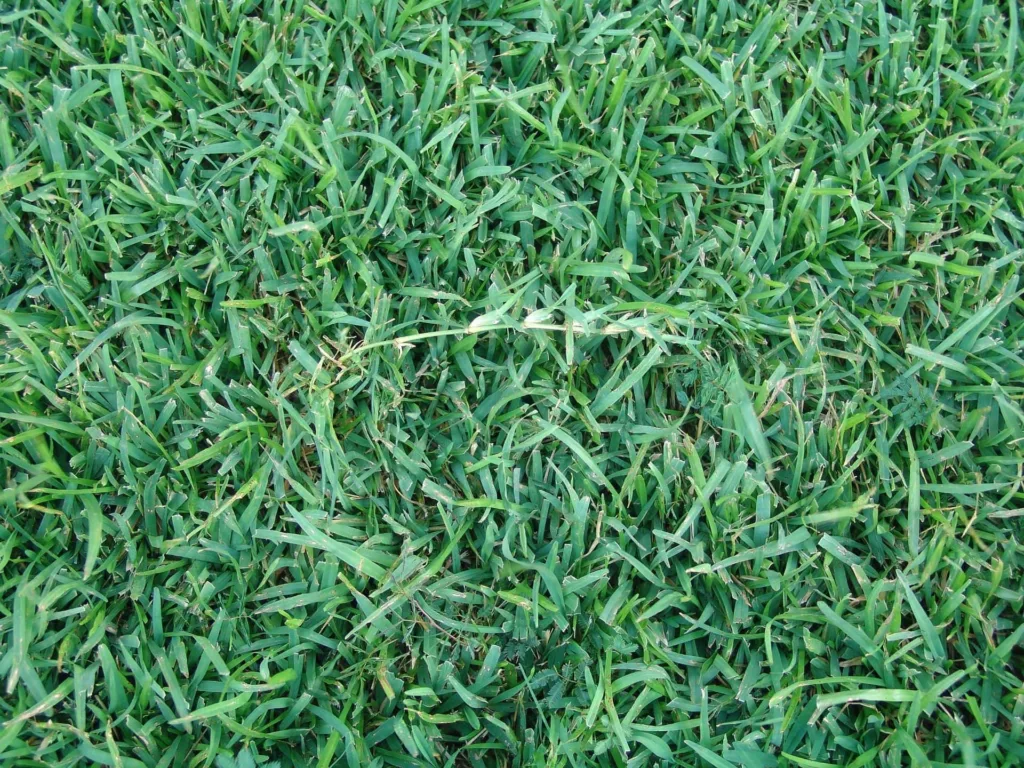Ever gazed at a lush, green lawn and wondered how to achieve that perfection in your own yard? The secret lies in choosing the right grass type. It’s not just about aesthetics; selecting the perfect grass for your landscape impacts everything from maintenance needs to sustainability. Let’s dive into the world of turf and uncover how to make your lawn the envy of the neighborhood.
Why Grass Selection Matters: The Foundation of a Beautiful Lawn
Choosing the right grass type is like picking the perfect foundation for your home. It sets the stage for everything that follows. A well-chosen grass variety doesn’t just look good; it thrives in your specific environment, resists local pests and diseases, and meets your lifestyle needs.
Consider this: the wrong grass type might require constant watering in a drought-prone area, or it could wither away in heavy shade. By contrast, the right choice will flourish with minimal effort, saving you time, money, and frustration.
This quote reminds us that success in lawn care comes from making informed choices and putting in the right kind of effort. Let’s explore how to make those choices.
Factors to Consider When Choosing the Right Grass Type

Climate and Geography: Your Lawn’s Natural Habitat
Your location plays a crucial role in choosing the right grass types. Are you in the cool, wet Pacific Northwest or the hot, humid Southeast? Each region has its grass superstars. For instance, Kentucky Bluegrass thrives in cooler northern states, while Bermuda grass dominates in the sun-baked South.
Soil Type and pH: The Foundation Beneath the Grass
Just as you wouldn’t build a house on sand, you shouldn’t plant grass without considering what’s underneath. Here’s a quick guide to grass preferences based on soil types:
| Soil Type | Preferred Grass Types |
|---|---|
| Sandy | Bermuda, Zoysia |
| Clay | Tall Fescue, Buffalograss |
| Loamy | Most grass types |
Don’t forget about pH! Most grasses prefer slightly acidic soil (6.0-7.0 pH). If your soil falls outside this range, you might need to amend it before planting.
Sunlight Exposure: Basking or Shading?
Some grasses love to soak up the sun, while others prefer a bit of shade. Here’s how to match grass types to your yard’s sun exposure:
- Full Sun (6+ hours daily): Bermuda grass, Zoysia, Kentucky Bluegrass
- Partial Shade (4-6 hours): Fine Fescue, Tall Fescue
- Heavy Shade (2-4 hours): St. Augustine, Fine Fescue
Traffic and Usage: Can Your Grass Take the Heat?
If your lawn hosts frequent football games or serves as a puppy playground, you’ll need tough turf. Bermuda grass and Kentucky Bluegrass are champions at bouncing back from heavy use. For lighter traffic, you might opt for the softer touch of Centipede or St. Augustine grass.
Maintenance Requirements and Budget: Time and Money Matter
Be honest about how much time and money you’re willing to invest in your lawn. Here’s a quick rundown:
- High Maintenance: Kentucky Bluegrass, Bentgrass
- Moderate Maintenance: Tall Fescue, Zoysia
- Low Maintenance: Buffalograss, Centipede grass
Remember, low maintenance often means slower growth and recovery, so there’s always a trade-off.
Popular Grass Types and Their Characteristics
Let’s dive into some of the most popular grass types, breaking them down by season preference.
Cool-Season Grasses: Northern Favorites
Cool-season grasses are typically found in the northern areas of the United States and are more tolerant to the natural colder temperatures of the region.
- Kentucky Bluegrass: The all-American lawn grass
- Pros: Dense, soft texture; excellent cold tolerance
- Cons: High water and fertilizer needs; poor shade tolerance
- Fescue Varieties:
- Tall Fescue: Drought-resistant and versatile
- Fine Fescue: Excellent for shady areas
- Perennial Ryegrass: Quick to establish
- Pros: Fast germination; good for overseeding
- Cons: Poor cold tolerance; high maintenance
Warm-Season Grasses: Southern Comforts
Warm-season grasses are typically found in the southern areas of the United States and are more tolerant to the natural warmers temperatures of the region.
- Bermuda Grass: The sports turf champion
- Pros: High traffic tolerance; drought-resistant
- Cons: Aggressive growth; poor shade tolerance
- Zoysia Grass: The low-maintenance beauty
- Pros: Dense growth crowds out weeds; good drought tolerance
- Cons: Slow to establish; can be invasive
- St. Augustine Grass: The shade-loving southerner
- Pros: Excellent shade tolerance; salt-tolerant
- Cons: Poor cold tolerance; susceptible to certain pests
Transition Zone Grasses: The Best of Both Worlds
For those living in the challenging transition zone between north and south, consider a mix of cool and warm-season grasses. A popular combination is Tall Fescue overseeded with Bermuda grass, providing year-round green.
Matching Grass Types to Specific Needs

Drought-Resistant Options for Water Conservation
In areas prone to water restrictions, consider these drought-tolerant champions:
- Buffalograss
- Bermuda grass
- Zoysia grass
These grasses have deep root systems and can survive extended periods without water.
Shade-Tolerant Grasses for Areas with Less Sun
For those tricky spots under trees or near buildings, try one of these shade-tolerant grass types:
- Fine Fescue
- St. Augustine grass
- Tall Fescue
These grasses can thrive with as little as 4 hours of sunlight per day.
High-Traffic Varieties for Active Lawns
If your lawn sees a lot of action, you’ll need tough turf. Consider:
- Kentucky Bluegrass
- Perennial Ryegrass
- Bermuda grass
These grasses recover quickly from wear and tear.
Low-Maintenance Grass Types for Busy Homeowners
For those who want a beautiful lawn without the constant upkeep, look into:
- Centipede grass
- Buffalograss
- Zoysia grass
These options require less mowing, fertilizing, and overall care.
The Pros and Cons of Different Grass Types
When choosing the right grass type, it’s crucial to weigh the pros and cons. Let’s break down some key factors:
Growth Rates and Mowing Frequency
- Fast Growth: Bermuda grass, Perennial Ryegrass
- Pro: Quick establishment and recovery
- Con: Frequent mowing required (sometimes 2-3 times per week)
- Slow Growth: Centipede grass, Zoysia
- Pro: Less mowing needed (every 1-2 weeks)
- Con: Slow to establish and recover from damage
Water Needs and Drought Tolerance
- High Water Needs: Kentucky Bluegrass, Bentgrass
- Pro: Lush, green appearance
- Con: Not suitable for drought-prone areas
- Drought Tolerant: Bermuda grass, Buffalograss
- Pro: Survives with minimal watering
- Con: May go dormant and brown during extreme drought
Disease and Pest Resistance
- High Resistance: Zoysia, Buffalograss
- Pro: Fewer pest and disease problems
- Con: May still be susceptible to specific regional issues
- Lower Resistance: St. Augustine, Bentgrass
- Pro: Often have other desirable qualities (e.g., shade tolerance)
- Con: May require more frequent pesticide applications
Winter Hardiness and Summer Heat Tolerance
- Cold Hardy: Kentucky Bluegrass, Fine Fescue
- Pro: Stays green in northern winters
- Con: May struggle in extreme summer heat
- Heat Tolerant: Bermuda grass, St. Augustine
- Pro: Thrives in hot southern summers
- Con: Goes dormant or dies in cold winters
How to Test Your Soil Before Choosing a Grass Type

Before you commit to a grass type, it’s crucial to understand your soil. Here’s how to get started:
DIY Soil Testing Methods
- Jar Test for Soil Composition:
- Fill a clear jar 1/3 full with soil
- Add water until nearly full
- Shake vigorously and let settle for 24 hours
- Observe layers: sand (bottom), silt (middle), clay (top)
- pH Test Strips:
- Mix soil with distilled water
- Dip pH strip and compare to color chart
Professional Soil Analysis Services
For a more comprehensive analysis, consider sending a soil sample to your local cooperative extension office. They can provide detailed information on:
- Soil pH
- Nutrient levels (N-P-K)
- Organic matter content
- Recommendations for amendments
Interpreting Soil Test Results for Grass Selection
Once you have your results, use this guide to choose the right grass type:
- pH 5.5-6.5: Ideal for most grasses. If lower, consider acid-loving varieties like Centipede grass
- High Clay Content: Look for grasses with strong root systems like Tall Fescue
- Sandy Soil: Choose drought-tolerant varieties like Bermuda grass
- Low Nutrients: Select low-maintenance grasses or be prepared to fertilize regularly
Planting and Establishing Your Chosen Grass
Now that you’ve chosen the right grass type, it’s time to get it in the ground. Here’s how to ensure success:
Best Times to Plant Different Grass Types
- Cool-Season Grasses: Plant in early fall or early spring
- Warm-Season Grasses: Plant in late spring or early summer
Seed vs. Sod: Pros and Cons
| Method | Pros | Cons |
|---|---|---|
| Seed | – Less expensive – More variety options – Stronger root development | – Longer establishment time – More initial maintenance – Vulnerable to washout |
| Sod | – Instant lawn – Less initial maintenance – Can be installed anytime | – More expensive – Limited varieties – Potential for shrinkage |
Step-by-Step Guide to Planting Grass
- Prepare the Soil:
- Remove old grass and weeds
- Till to a depth of 6-8 inches
- Add amendments based on soil test results
- Level the Area:
- Use a rake to create a smooth surface
- Remove rocks and debris
- Plant the Grass:
- For seed: Spread evenly using a seed spreader
- For sod: Lay pieces tightly together, staggering joints
- Water Thoroughly:
- Keep the soil consistently moist until germination (seed) or roots establish (sod)
- Initial Care:
- Limit traffic for the first few weeks
- Begin mowing when grass reaches mowing height for its type
Maintaining Your New Lawn
Congratulations on your new lawn! Now, let’s keep it looking great with these maintenance tips:
Mowing Techniques for Different Grass Types
- Cool-Season Grasses: Mow to 2.5-3.5 inches
- Warm-Season Grasses: Mow to 1-2 inches
Remember the “one-third rule”: Never remove more than 1/3 of the grass blade in a single mowing.
Fertilization Schedules and Methods
- Cool-Season Grasses: Fertilize heavily in fall, lightly in spring
- Warm-Season Grasses: Fertilize in late spring and summer
Always follow package instructions and consider using a slow-release fertilizer to prevent burning.
Watering Strategies for Optimal Growth
- Water deeply and infrequently to encourage deep root growth
- Water early in the morning to reduce evaporation
- Adjust watering based on rainfall and season
Dealing with Weeds and Pests Specific to Your Grass Type
- Pre-emergent Herbicides: Apply in early spring to prevent weed seeds from germinating
- Post-emergent Herbicides: Use for visible weeds, following label instructions carefully
- Integrated Pest Management (IPM): Combine cultural, biological, and chemical controls for best results
Troubleshooting Common Grass Problems

Even with the best care, lawns can face challenges. Here’s how to address common issues:
Identifying and Treating Grass Diseases
- Brown Patch:
- Symptoms: Circular brown areas
- Treatment: Improve drainage, apply fungicide if severe
- Dollar Spot:
- Symptoms: Small, circular patches of dead grass
- Treatment: Maintain proper nitrogen levels, water deeply
Addressing Bare Patches and Thinning Areas
- Overseed bare spots with matching grass seed
- Keep the area moist until new grass establishes
- Consider top-dressing with compost to improve soil quality
Dealing with Color Changes and Nutrient Deficiencies
- Yellow Grass: Often indicates nitrogen deficiency. Apply a nitrogen-rich fertilizer.
- Purple Tinge: May signal phosphorus deficiency. Add bone meal or a phosphorus-rich fertilizer.
- Pale Green: Could be iron deficiency. Apply iron supplements or chelated iron.
Eco-Friendly Grass Alternatives
As we become more environmentally conscious, consider these alternatives to traditional lawns:
Native Grass Options for Your Region
Native grasses are adapted to local conditions, requiring less water and maintenance. Some popular options include:
- Northeast: Pennsylvania Sedge
- Midwest: Prairie Dropseed
- Southwest: Blue Grama
- Southeast: Muhly Grass
Grass and Clover Mixes for Sustainability
Adding clover to your lawn can:
- Reduce fertilizer needs (clover fixes nitrogen)
- Improve drought resistance
- Support pollinators
Consider a mix of 80% grass seed and 20% clover for best results.
Artificial Turf: Pros and Cons
| Pros | Cons |
|---|---|
| No watering or mowing needed | High initial cost |
| Always green and manicured | Can get hot in direct sun |
| Pet-friendly (easy to clean) | Not environmentally friendly |
| Ideal for high-traffic areas | Lacks the feel and smell of real grass |
The Future of Lawn Grass: Emerging Trends and Technologies
The world of lawn care is constantly evolving. Here’s what to watch for:
Genetically Modified Grass Varieties
Scientists are developing grasses that are:
- More drought-tolerant
- Resistant to common pests and diseases
- Slower-growing (requiring less mowing)
Smart Irrigation Systems for Grass Care
New technologies include:
- Weather-based controllers that adjust watering based on local conditions
- Soil moisture sensors that prevent overwatering
- App-controlled systems for remote management
Robotic Mowers and Their Impact on Grass Selection
As robotic mowers become more popular, we may see a shift towards:
- Grass types that thrive with frequent, light mowing
- Lawns designed with mower-friendly layouts
- Increased focus on year-round green (as daily mowing becomes effortless)
Conclusion: Making the Right Choice for Your Lawn
Choosing the right grass type is a journey, not a destination. It involves understanding your local climate, assessing your lawn’s specific conditions, and considering your maintenance preferences. Remember these key points:
- Know Your Zone: Your climate dictates which grasses will thrive
- Assess Your Soil: The foundation of a healthy lawn starts below the surface
- Consider Usage: High-traffic areas need tough turf
- Be Realistic About Maintenance: Choose a grass that fits your lifestyle
- Think Long-Term: Consider eco-friendly options for a sustainable lawn
By taking the time to choose the right grass type, you’re setting the stage for years of enjoyment. A well-chosen lawn isn’t just a patch of green; it’s an extension of your home, a playground for family and pets, and a small but significant part of our shared environment.
Whether you opt for a traditional grass lawn, a native grass meadow, or an innovative eco-friendly alternative, remember that the perfect lawn is the one that brings you joy and fits seamlessly into your life. Happy grass-growing!


